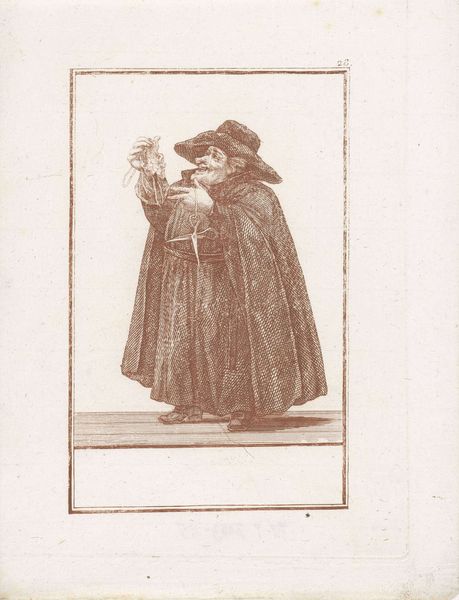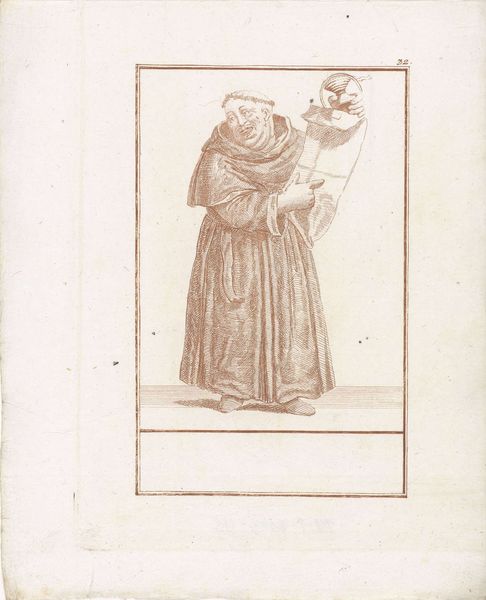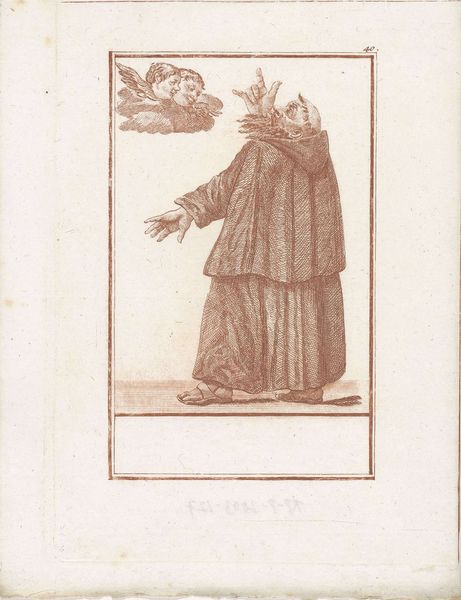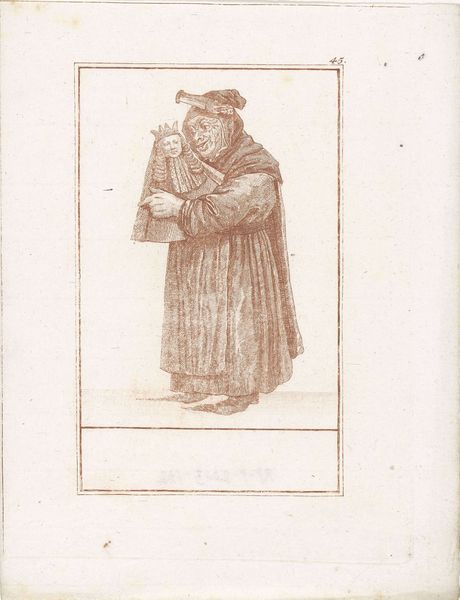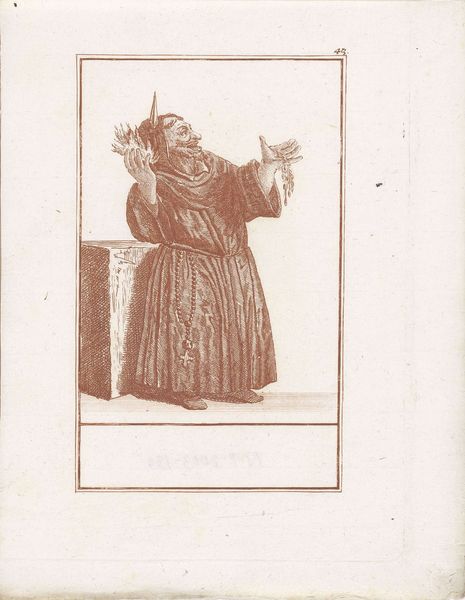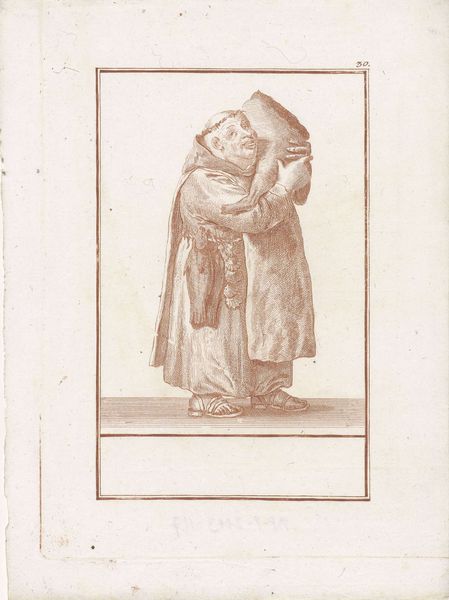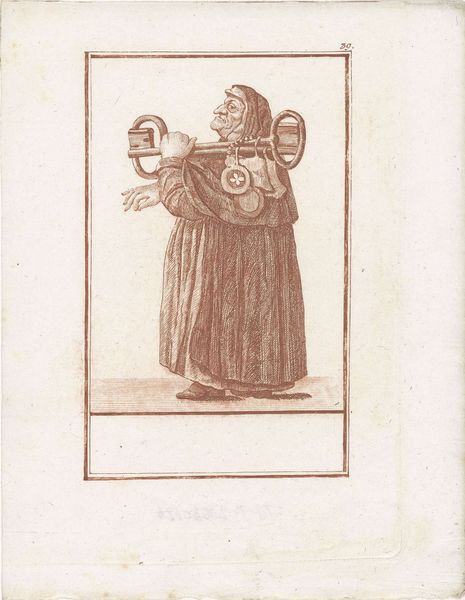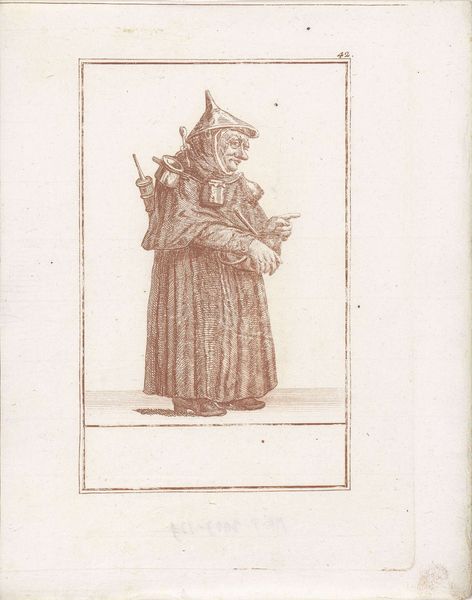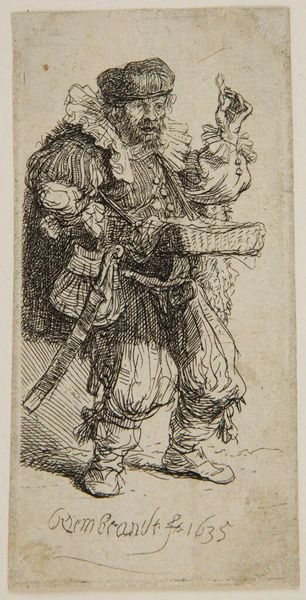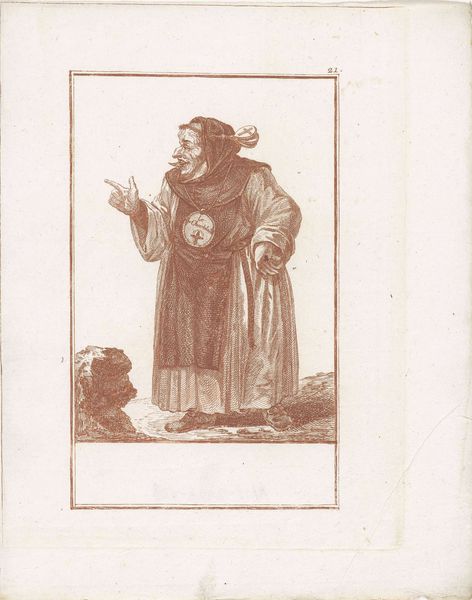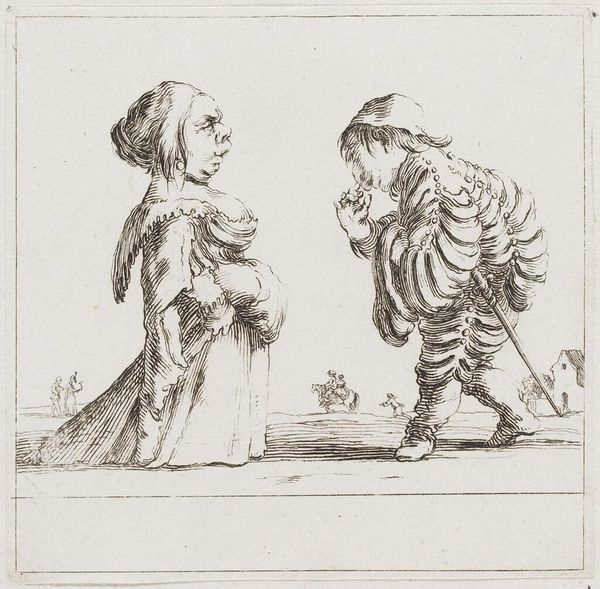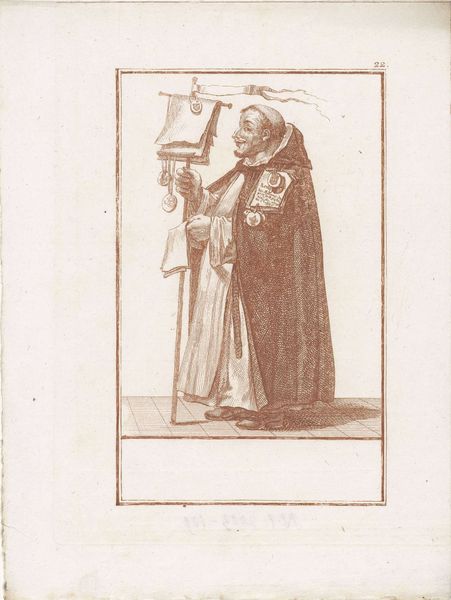
print, engraving
#
toned paper
#
light pencil work
#
quirky sketch
#
baroque
# print
#
pencil sketch
#
sketch book
#
figuration
#
personal sketchbook
#
sketchwork
#
pen-ink sketch
#
sketchbook drawing
#
genre-painting
#
sketchbook art
#
engraving
Dimensions: height 235 mm, width 181 mm
Copyright: Rijks Museum: Open Domain
Curator: Jacob Gole’s "Monnik blazend op een jachthoorn," created around 1724, presents a figure of a monk rendered with delicate lines. It's part of the Rijksmuseum's collection. Editor: Immediately, I'm struck by its intimate scale and somewhat whimsical tone. The fine linework and the warm hues give it a certain lightness, even with the rather serious figure depicted. Curator: The print medium itself is quite significant here. Engravings like these allowed for wider distribution of imagery. Who would have been looking at this, and where? Was Gole offering a social commentary on monastic life, or simply exploring the human form? Editor: Structurally, the composition directs your eye right to the monk's face and that peculiar hunting horn. The texture of the robes, created simply by varying line density, demonstrates mastery over the printmaking process. The subject is almost comical with its ornate clerical robes topped by the simple headwear. What do you think Gole communicates with that contradiction? Curator: Well, engraving required specific skills passed down through workshops. Access to materials like copper plates and the knowledge of acid etching were significant barriers to entry. So Gole’s skill wasn't just aesthetic but embodied his professional status. As for the subject, it's less about contradiction and more about the blending of societal roles: the hunt, historically a pastime of the wealthy, juxtaposed with monastic vows. How might it reflect tensions between church power and everyday life? Editor: I see your point. Visually, though, the positioning of the horn, almost fused to the monk’s face, suggests a kind of auditory invasion—the mundane world intruding on the spiritual. Notice, also, the inscription area left blank below the artwork: Gole may have envisioned this for further embellishment and contextual meaning within other artists' series of artwork. Curator: Ultimately, Gole's choice of subject, combined with the print medium, offered accessibility to a potentially critical image of established religious life. The sketch may not present judgment itself but enables conversations surrounding wealth, material culture, and labor during the 18th century. Editor: An engaging piece; it encourages a conversation between the formal qualities and possible meanings encoded within Gole’s technique.
Comments
No comments
Be the first to comment and join the conversation on the ultimate creative platform.
